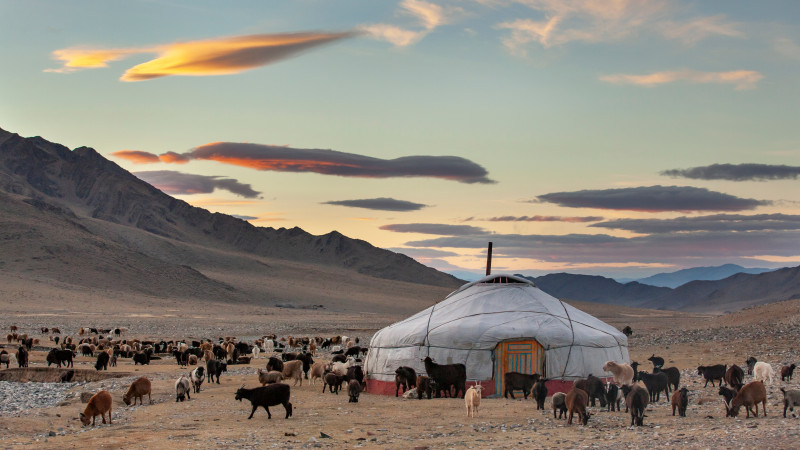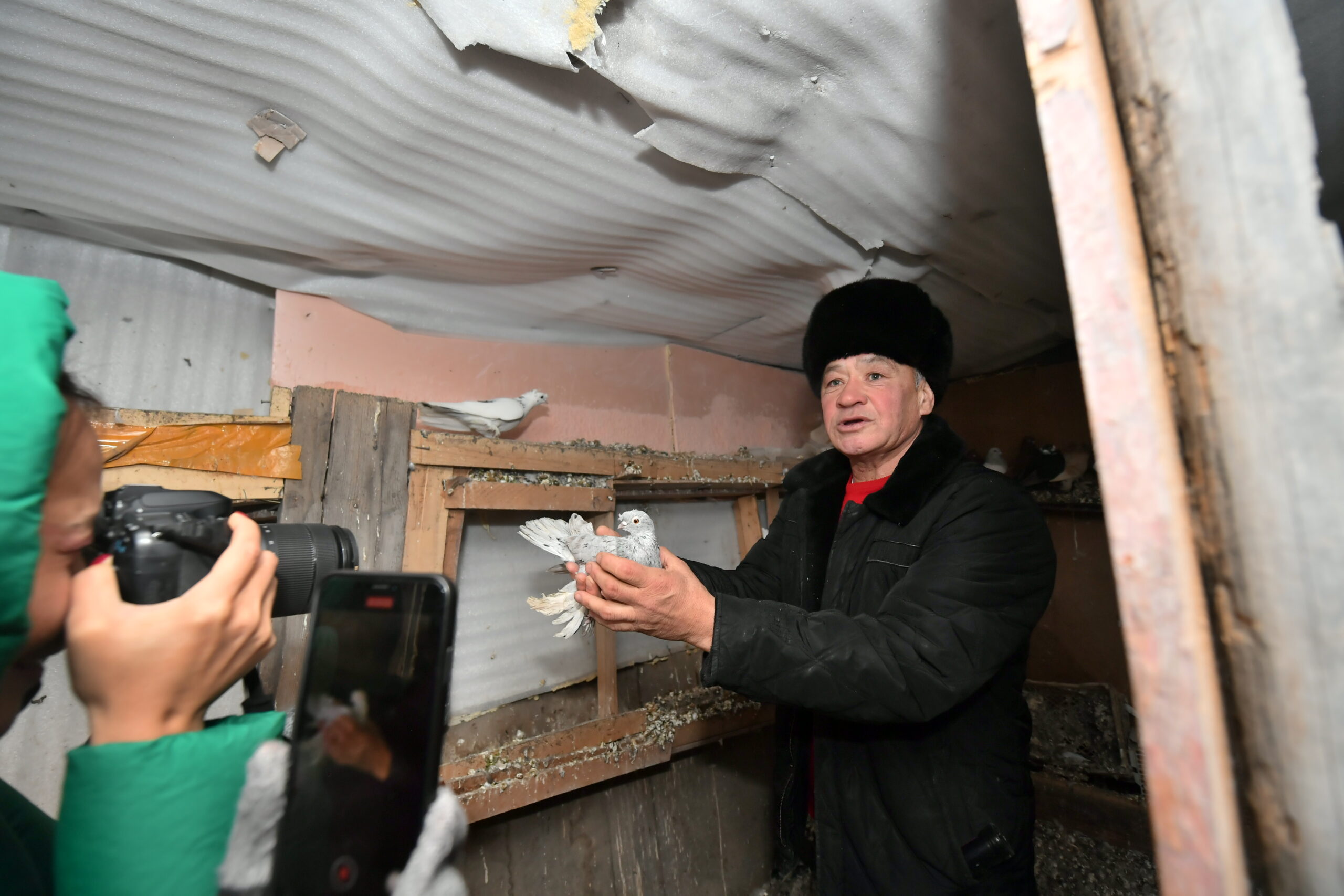AKMOLA REGION – As interest in rural or agricultural tourism grows, the Kazakhstan Association of Agro and Rural Tourism (KAART) and the United Nations Development Programme (UNDP) organized a series of training seminars in rural areas to educate farmers about the advantages of sustainable agro and rural tourism.

The Kazakh countryside with its breathtaking vast steppes, forests, lakes, and pristine pastures may provide an ideal travel destination for adventure travelers who like to go off the beaten track. Photo credit: Adobe Stock.
More than 100 farmers participated in the seminars followed by an informational tour on Dec. 2.
The Kazakh countryside with its breathtaking vast steppes, forests, lakes, and pristine pastures may provide an ideal travel destination for adventure travelers who like to go off the beaten track. The next step is to teach rural residents agrotourism skills, which would increase the region’s tourism potential and help to make additional income for farmers.
According to Khalida Tulegenova, KAART president, agrotourism highlights rural communities’ potential by showcasing their natural and historical features, customs, way of life, gastronomy, crafts, and creativity.
“It is expected that in the near future more and more urban residents will prefer these tours. Our task is to prepare the villagers for the proper organization and approach in this industry, which in turn is an additional source of income and development of rural areas,” said Tulegenova.
The informational tour along villages in the Akmola Region offered the villagers an opportunity to showcase their local cuisine, the historical sights, and the nature that surrounded them.
The Sokolov family craft cheese factory
The first destination is “Sokolov’s cheese” family craft cheese factory in Katarkol village which is nearly 250 kilometers or a three-hour ride away from the capital Astana.

When Sokolov speaks of cheese looking down at the 31-month-old Montasio cheese, one can notice he has nurtured a huge passion for it. Photo credit: Sali Sabirov, UNDP.
Ruslan Sokolov and his wife founded the factory in 2018, which has since expanded to produce around 38 varieties of cheese using Italian technology. The factory can process up to one ton of milk per shift.
Sokolov showed the visitors around his small factory and shared his story and his passion for cheese. In one part of the factory, visitors could see a machine for mixing and pressing freshly made cheeses. Next door, a cool storeroom filled with wooden racks of cylindrical molded cheeses.
When Sokolov speaks of cheese looking down at the 31-month-old Montasio cheese, one can sense his passion for his craft. Fontina cheese, cheese with truffle, Switzerland’s calling card – belper knolle cheese sprinkled with black pepper – all of it can be found on the shelves of Sokolov’s cheese factory.
His passion for cheese was found in the pursuit of self-actualization. “As rural people, we have always had a farm in the family, always had a cow. In 2018, I just started trying things out. I found information on the internet, bought a sourdough starter, and started making cheese in a pot. I initially liked the result. Then I realized that I had to learn because otherwise, you can go astray,” said Sokolov, describing his first experiments with cheese.
He professionally learned to make cheese from an Italian master and continues to master his skills by attending various international trainings and masterclasses. Natural starter cultures from France, unpasteurized milk from a local farm, and no artificial products make for a genuine, mature farmhouse cheese.
Sokolov sells cheese locally, but he said that many visitors, including foreigners, come to buy his cheese. “Cheese lovers come to visit us quite frequently. We hold tastings for them. A lot of foreign tourists come. Recently tourists from Denmark visited, and an English reporter,” said Sokolov.
Aliakbarov – a hereditary horse breeder
Zhylkybay Aliakbarov from Karabauyr village, no doubt, has enthusiasm for horses, for country living, and for farming.

For tourists, Aliakbarov offers the best kymyz (fermented mare milk) and a picture-perfect experience of riding a horse in the scenery of Maloe Schebach’e lake. Photo credit: Sali Sabirov, UNDP.
His family has farmed in these lands, progressively refining horse breeding and all the by-products a horse can provide for many years. After a life-long experience working with the animal, he has a thorough understanding of how to manage them and what incredible benefits horses can offer to people.
Even his name Zhylkybay means “rich for horses.” “They gave me my name because I was born in a pasture among horses, and my father named me Zhylkybay so that I would have many horses and his superstition became true,” laughed Aliakbarov.
Today, Aliakbarov owns at least 500 horses in his village of only 10 households.
There is, he said, much to admire about the Kazakh horse, but for him, the creature’s most beautiful feature is its cleanliness.
“Historically, Kazakhs owned four types of livestock (camel, horse, sheep, and cow), among which, in my opinion, the cleanest is the horse. For example, a horse drinks only clean water, unlike cows.”
Their personality, according to him, is as varied as humans’ and they are among the most intelligent and proud animals. “Why is it said that Kazakhs have the character of a horse? Because Kazakhs were raised on horses, they received a lot of upbringing from them. A child who grows up riding a horse will become a batyr (a hero), they will be very strong-spirited.”
Long before the introduction of contemporary vehicles, nomadic Kazakhs protected their territories on horses and consumed all the by-products that come with a horse, from meat to milk. It was a simple diet that kept them healthy, mostly because mare’s milk is a nutritional powerhouse.
“A horse is a sacred animal: it is a vehicle if you ride it, its milk is medicine if you drink it, and if you eat it, its meat is sweet. Horse meat has very low cholesterol compared to beef,” said Aliakbarov.
His main occupation is selling kymyz – a traditional Kazakh drink made from fermented mare milk that has many health benefits. It is said to trim blood sugar and keep cholesterol levels at bay. Despite having a sour taste, it remains a vital part of the Kazakh villagers’ diets.
“Over the summer we can produce up to 2.5-3 tons of kymyz. I sell kymyz to the nearby resorts all year round. I also have a selling point in Kokshetau, but other people in the village find it hard to trade their products,” said Aliakbarov.
Although the immediate goal is to satisfy domestic demand, he is researching and developing strategies to expand the market for kymyz. The problem is that it is a drink that requires special maintenance to preserve its health qualities.
“For a shop, I have to choose a person who knows how to store kymyz to preserve its qualities. Someone who knows at what temperature it should be kept, and at what time you should shake it. Kymyz loves movement. Otherwise, after a day, the yolk (the fats) will separate,” said Aliakbarov.
For tourists, Aliakbarov offers the best kymyz and a picture-perfect experience of riding a horse in the scenery of Maloe Schebach’e lake. However, it is not just about the beautiful views. Aliakbarov says that horse rides have benefits that are good for mental health, as well as for physical well-being.
At Baimagambetov’s – a coastal countryside dovecote
The last visit for the day was to Zhanybek Baimagambetov, a local fancier who breeds dozens of pigeons in the yard of his small house in the coastal village of Akylbay.

Baimagambetov’s pigeon collection counts over 20 breeds, including Uzbeks, Ukrainian, Turkish pigeons, and a peacock-pigeon. Photo credit: Sali Sabirov, UNDP.
Baimagambetov is very happy to discuss pigeons. He is fluent on the subject. “It is not a business, although we know they are expensive, it is a hobby,” he said.
He talks about the nature of pigeons and their unspoken loyalty to their owners. Year-round he trains and flies his pigeons, and every time they are released, they come home to land on the roof of his home.
His spouse confessed that she was not initially supportive of her husband’s hobby, but “one day when I saw him let one pigeon go up and hold the other pigeon, and the pigeon came back to his hand, I realized that the expression ‘pigeon loyalty’ is true.”
His personal collection sports over 20 breeds, including Uzbek, Ukrainian, Turkish pigeons, and even a peacock-pigeon.
“The carrier pigeon can reach speeds of up to 100 kilometers per hour. It takes years, even centuries to breed some of them. That is why they are highly valued. Some pigeons cost as high as $300,000,” said Baimagambetov.
Lured by the quality of life in the village and his hobby, Baimagambetov converted the home that once belonged to his grandparents into a house where visitors rent a private room and share the common areas. Tourists can enjoy the beautiful scenery of the nearby mountains and the lake listening to fascinating pigeon stories from the owner of the house.

